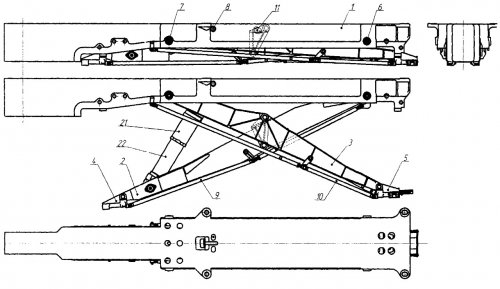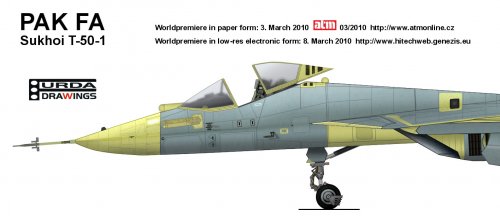Sundog said:
As for the all moving vertical tails on the T-50, I'm willing to bet they confer a higher signature than a conventional vertical tail like the F-22's, but they offer lower drag and they're able to make them that small due to the 3D TV. Which points to more emphasis on advanced aerodynamics than LO.
The All-Moving Vertical Tails(AMVT) offer either lower drag as you realized or lower observation you didn't realized, because you forgot the smaller the span & area of fin or wing be, the smaller RCS it result. In order to same effort, the AMVT brings slighter deflected angle than that flag-like fin on F-22, which also makes LO more than F-22.
Since we accepted the LO of YF-23 were better than F-22 under such condition the swept angle of YF-23's wing is smaller than F-22, we ought to remember what's the condition bring this advantage.
Sundog said:
Also, the reason it isn't as blended around the inlets/engines area, is due to the relaxed LO requirements versus those of the ATF. As I've stated previously, which has been stated by the Russian designers, they weren't going for all aspect stealth in their design and that's quite obvious when one sees it from the side, bottom, and rear quarter views. That isn't to say it's signature is as large as the Flanker's in that regard, it obviously isn't. They moved the engines up higher into the central fuselage, which should lower how much they reflect in the side lobes, but I think it was done more to minimize supersonic wave and trim drag than anything else. But based on how those areas were constructed, with their right angles between the nacelles bottom and the wing/fuselage interface, LO certainly wasn't a priority in those areas.
Oh, yeah? Does F-22 care all aspect stealth?
First of all, I come to remind you the rectangle nozzle on F-22 is much larger and heavier than you imaged. Don't forget the engine of the F-22 still is circle section, the circle is totally INSCRIBED by a rectangle. So you press at height, the fat at wide it must be. That's why US adds triangle blade at top and bottom of nozzle's edge. This was a reluctant way they have to use, but other do it reluctantly, you do it again will become stupid.
Secondly, if nacelle moved up higher into central fuselage, we could accuse it bad for stealth in side view because it makes its airframe seemingly more thick. If the nacelle was paralleled with central line, we could accuse it harmed stealth. So, how the nacelle shall set? Throw it away? Why Russian do something always wrong, and what done by American is right forever?
Someone should be taught there are variant way to decrease the sonic drag due to different area of sonic.
The waspish fuselage is for transonic good, and, for supersonic good, you should make fuselage close to arrow-like, Eurofighter for example.
The swell nacelle YF-23 used, gave it a narrow section from side view where the wing span is maximum from up-look, which for transonic.
The V-tail or one say butterfly-tail decreased bottom drag out of tail very much,m which brings a huge advantage for supersonic. Notice that main drag in fly is from tail no matter trim or shockwave.
The nacelle of PAKFA we saw is not swell so much as YF-23, but the very large swept angle of wing delay the sonic wave just like Eurofighter used even more.
Thirdly, how the inlet designed would influenced RCS for sure, but this depends on what object you compare to.
As someone mentioned it very good
Sundog said:
one can see the evolution from the McDonnel F-3H to the F-101, to the F-4.
I draw anyone read here pay attention to so many aircraft in history. Uncountable aircraft was designed "S" piper inlet, such as F-101, F-105, even MiG-21 and MiG-23, but nobody has been saying those ARE stealth aircraft. The truth was and always been there, the air-intakes was forced to design as "S" shape, which become to straight on F-14 with particular purpose. Those F-22 fans are so uneducated that seeking the reason reversed in results. After RAPTOR fans stood in front of MiG-19's nose, I could give a reasonable ask, "could you see engine blade"?
You guys can bring this occasion to anywhere and waiting for see how smart they are as how stealth farmer is.




